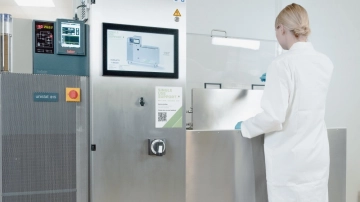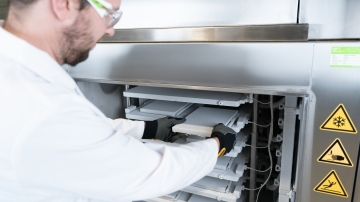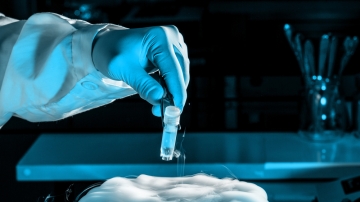The purpose of cell banking: Uses & Applications
Table of contents
ShowAt the core of cutting-edge research and biopharmaceutical production lies the crucial need to preserve and store precious cell lines, ensuring their availability for future studies and therapeutic applications. Cell banking plays a critical role in science and medicine by preserving and storing valuable cell lines. This essential process is instrumental in advancing research and biopharmaceutical production.
In this article, we will explore the purpose and applications of cell banking, examining its significance in scientific discoveries and medical breakthroughs.
Cell banking in brief
Cell banking is a fundamental process in the production of biopharmaceuticals, involving the methodical preservation and storage of cell lines. These cell lines consist of specific types of cells that have been isolated, characterized, and cultivated for research or therapeutic purposes. The primary objective of cell banking is to ensure a stable and consistent cell source for various applications.
What is the purpose of cell banking?
Cell banking serves several crucial purposes that are integral to the progress of scientific research and biopharmaceutical applications. Let's take a closer look at the key objectives and benefits of cell banking:
1. Ensuring a stable and consistent cell source
One of the primary purposes of cell banking is to establish a stable and consistent source of cells for research and production. Cell lines used in scientific studies are susceptible to changes over time due to genetic drift, environmental factors, or other variables.
By creating a cell bank, researchers can freeze and store cells at a specific passage level, preserving their characteristics and minimizing variations between experiments. This consistency enhances the reproducibility of results, which is a critical aspect of scientific validity.
2. Facilitating reproducibility of experimental results
Reproducibility is a cornerstone of the scientific method, ensuring that experiments can be independently verified and validated. Cell banking plays a vital role in promoting reproducibility by providing researchers with a standardized and well-characterized cell source. By using the same cell line from a cell bank across different experiments and laboratories, scientists can confidently compare results, validate hypotheses, and build upon previous findings.
3. Serving as a backup and contingency plan
Cell lines are delicate and susceptible to contamination, genetic mutations, or accidental loss. Such events can be devastating for ongoing research or biopharmaceutical production.
Cell banking serves as an essential contingency plan, allowing researchers to restart experiments or bioproduction processes using frozen cells from the bank. This safeguard ensures that valuable research is not irreversibly compromised and enables the seamless continuation of scientific endeavors.
4. Supporting long-term studies and replication
Many scientific studies require long-term observation and validation through replication. Cell banking provides a means to store cells for extended periods, allowing researchers to conduct follow-up studies and replicate their findings over time. The ability to use the same cell line across multiple experiments, even after months or years, is invaluable for longitudinal studies and longitudinal assessments of drug efficacy or safety.
5. Facilitating collaboration and standardization
Cell banks enable researchers worldwide to work with standardized cell lines, fostering collaboration and knowledge exchange. Commonly used cell lines, such as CHO cells or HEK293 cells, can be shared among research institutions, promoting consistency and standardization in experimental protocols. This collaborative approach accelerates scientific progress, as scientists can build upon each other's work more efficiently.
6. Accelerating biopharmaceutical production: Seed Train Intensification
In biopharmaceutical production, the seed train is a critical process involving multiple stages of cell growth to increase cell biomass before entering the production bioreactor. Cell banking plays a vital role in optimizing this seed train intensification process.
By providing a well-characterized and controlled cell source, cell banking reduces the variability and risk associated with using early passages of cells in the seed train. This enables a more efficient and reliable bioproduction process, ultimately speeding up the production of biopharmaceuticals.
Single Use Support has developed solutions to accelerate the conventional seed train process. The intensified process is based on cell bank multiplication - in which the cells are filled into numerous small single-use bags which will be frozen. The seamlessly integrated homogenization solution RoSS.PADL ensures that the cells are evenly distributed into the individual single-use bags. Freezing can be done either down to -80°C / -112°F with the plate-based laboratory freezer or down to -170°C/-274°F with the cryogenic controlled rate freezer. After thawing, each bag forms the basis for production in the bioreactor.
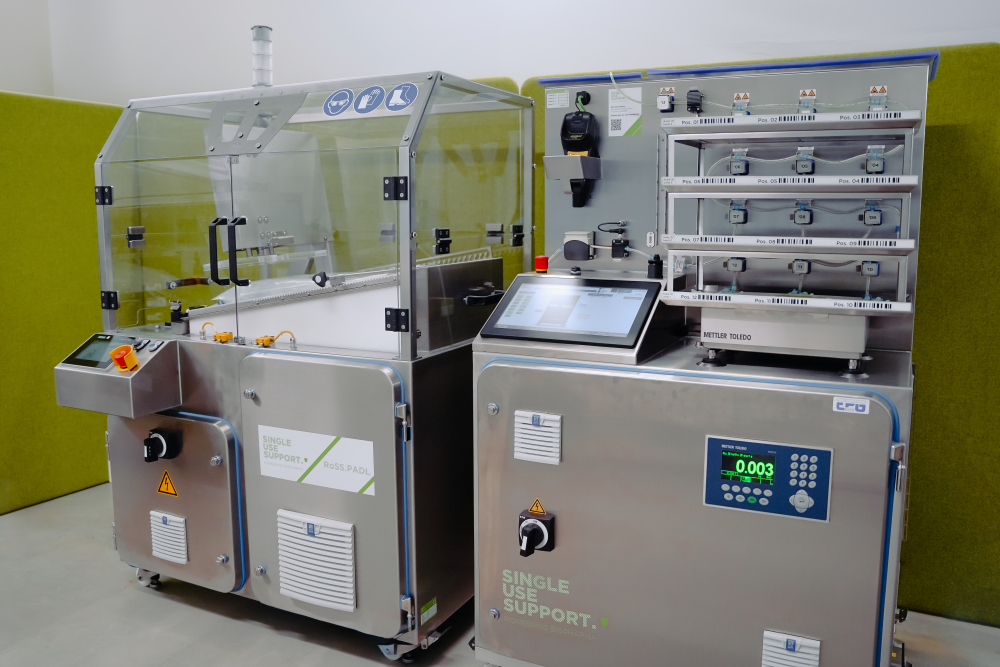
Applications of cell banking
Cell banking applications encompass a wide range of areas, each contributing to significant advancements and breakthroughs in medicine. Here is an overview of the areas in which cell banking is used:
- Drug development
- Biopharmaceutical production
- Stem cell research & regenerative medicine
- Disease modeling
- Cell Therapies
- Research
In the following, we will discuss each application area in more detail.
Drug development and biopharmaceutical production
Cell banking forms the foundation for developing novel drugs and biopharmaceuticals. Researchers use well-characterized cell lines from banks to test the efficacy and safety of new treatments, accelerating the drug discovery process.1
Stem cell research and regenerative medicine
In the field of regenerative medicine, cell banking is vital for preserving and storing various stem cell types. These banked stem cells can be used to generate specific cell populations for tissue repair and regeneration.
Disease modeling
Cell banking enables the creation of disease-specific cell lines, serving as invaluable tools for disease modeling. Researchers can use these banked cells to better understand the mechanisms of diseases, identify potential drug targets, and test new therapeutics in a controlled environment.2
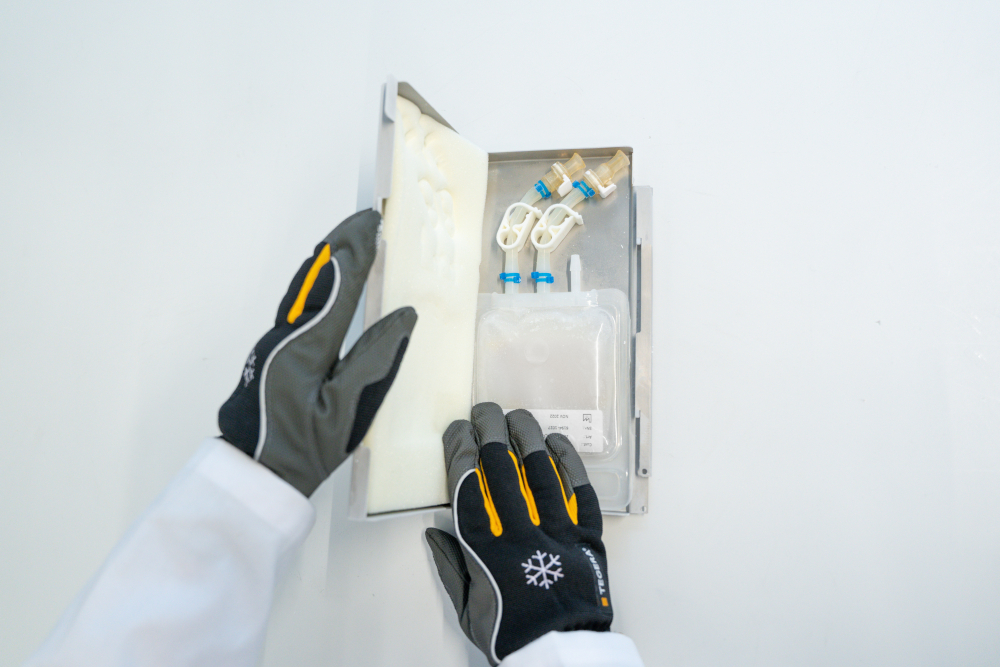
Cell therapies
Cell-based therapies, such as CAR-T cell therapy and mesenchymal stem cell treatments, hold promise for various medical conditions. Cell banking ensures a reliable supply of therapeutic cells for clinical applications, streamlining the manufacturing process and ensuring consistent treatment outcomes.
Academic and industrial research
In academic and industrial research settings, cell banking is essential for storing and sharing standardized cell lines among researchers worldwide. These well-characterized cell banks foster collaboration, accelerating scientific discoveries and enabling researchers to build upon established knowledge.
Conclusion: Purpose & Applications of a Cell Bank
The primary purpose of cell banking lies in providing researchers and biopharmaceutical companies with a consistent and reliable cell source, leading to reproducible results and accelerated scientific advancements.
The applications of cell banking span across diverse fields. From expediting drug discovery to enabling personalized cell-based treatments, cell banking holds immense promise for optimizing healthcare and improving patient outcomes.
As a leading supplier of consumables and platform systems for safe aliquoting, freezing, and thawing drug substances, Single Use Support contributes significantly to cGMP compliant cell banking solutions. The process solution provider’s commitment ensures the safety and quality of cell-based products, further elevating the impact of cell banking in advancing scientific research and biopharmaceutical production.
FAQs about cell banking purpose
What is the purpose of cell banking?
The purpose of cell banking is to preserve and store valuable cell lines for various applications in scientific research, drug development, biopharmaceutical production, regenerative medicine, and cell-based therapies. Cell banking ensures a stable and consistent source of cells, enabling reproducibility and continuity in experiments and processes.
What is the WHO Reference Cell Banks (RCBs)?
The WHO Reference Cell Banks (RCBs) are established by the World Health Organization (WHO) to provide standardized and authenticated cell lines for use in biological research and production of vaccines and biologics.
What are the advantages of cell banking?
The advantages of cell banking include providing a consistent source of cells for research, saving time and cost by avoiding repetitive cell isolation, accelerating drug screening, supporting personalized therapies, and fostering collaboration through shared resources.
- Cell Banks Preparation In Biopharmaceuticals Production, http://dx.doi.org/10.21307/PM-2019.58.1.087, Published 2019-07-05
- Stem Cell-Based Disease Modeling and Cell Therapy, http://dx.doi.org/10.3390/cells9102193, Published 2020-09-29






